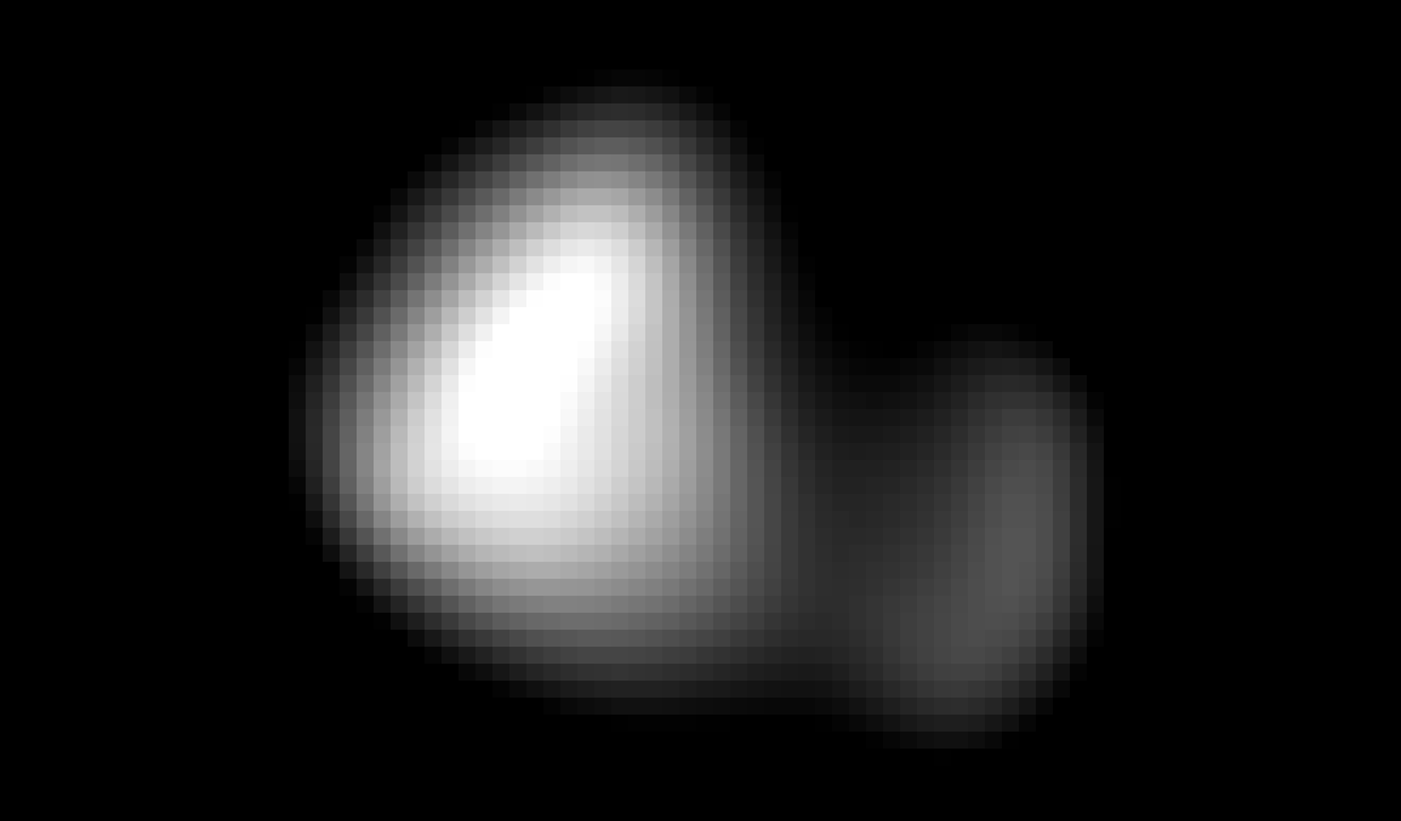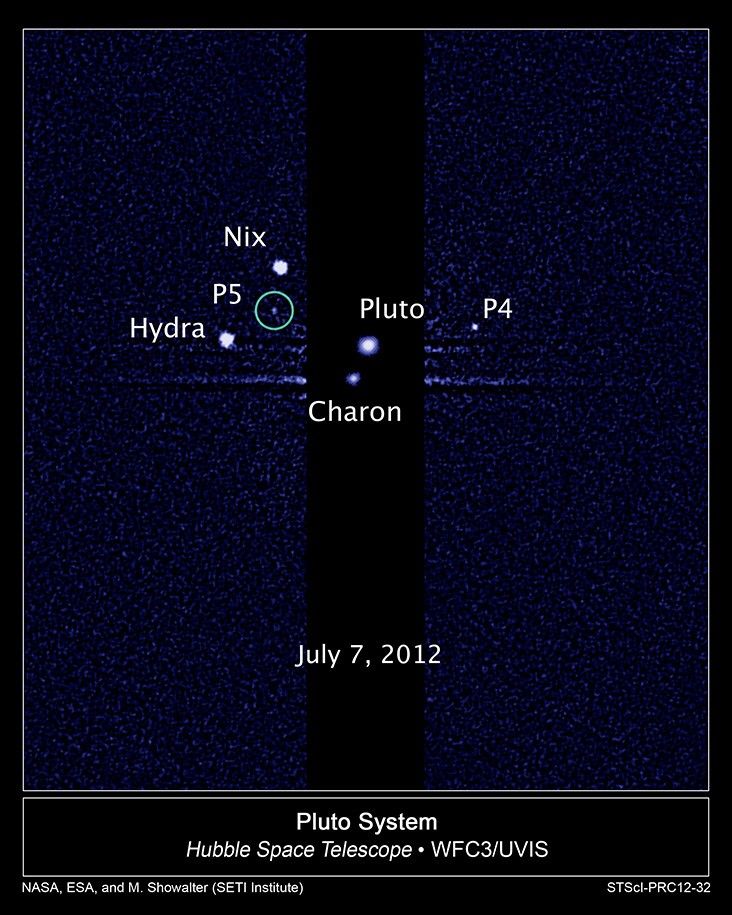Kerberos
Discovery
Kerberos was discovered on June 28, 2011 by a large team led by Mark Showalter using the Hubble Space Telescope. It was confirmed in subsequent Hubble pictures taken on July 3 and July 18. The moon was not seen in earlier Hubble images because the exposure times were shorter. There is a chance it appeared as a very faint smudge in 2006 images, but was overlooked because it was obscured.
In Depth
Pluto's tiny moon Kerberos appears to be smaller than scientists expected and has a highly-reflective surface, counter to predictions prior to the July 2015 flyby of the NASA's New Horizons spacecraft.
The new data show that Kerberos appears to have a double-lobed shape, with the larger lobe approximately 5 miles (8 kilometers) across and the smaller lobe approximately 3 miles (5 kilometers) across. Scientists speculate from its unusual shape that Kerberos could have been formed by the merger of two smaller objects. The reflectivity of Kerberos' surface is similar to that of Pluto's other small moons (approximately 50 percent) and strongly suggests Kerberos, like the others, is coated with relatively clean water ice.
Before the New Horizons encounter with Pluto, researchers had used Hubble Space Telescope images to "weigh" Kerberos by measuring its gravitational influence on its neighboring moons. That influence was surprisingly strong, considering how faint Kerberos was. They theorized that Kerberos was relatively large and massive, appearing faint only because its surface was covered in dark material. But the small, bright-surfaced Kerberos―now revealed in these new images―shows that the idea was incorrect, for reasons that are not yet understood.
Kerberos is located between the orbits of Nix and Hydra, which Hubble discovered in 2005. Charon was discovered in 1978 at the U.S. Naval Observatory and first resolved using Hubble in 1990 as a separate body from Pluto.
Pluto's entire moon system is believed to have formed by a collision between Pluto and similar-sized body early in the history of the solar system. The smashup flung material that coalesced into the family of satellites observed around Pluto. Lunar rocks returned to Earth from the Apollo missions led to the theory that our moon was the result of a similar collision between Earth and a Mars-sized body 4.4 billion years ago.
How Kerberos Got Its Name
Originally designated S/2011 (134340) 1 (and sometime referred to as P4), Kerberos is named after the three-headed dog of Greek mythology. All of Pluto's moons are named for mythological figures associated with the underworld.

































